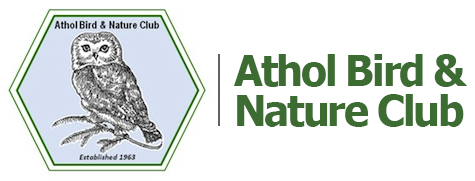Windows on Main
Mural Project
“Windows on the Main” panels celebrate Athol’s industrial development using the power of moving water, the changing seasons, and the connection to the wild lands and wildlife adjacent to the town center. Using new digital media and printing techniques the panels will be remastered under the direction of the original designer and artist M.E. Kane.

“ABNC and MREC” Acrylic on Wood
by Casey Williams
Casey wanted to create a piece specifically for this project using the same approach as she does her town maps. She gathered icons relevant to the special people and nature of this area. She created a blend of all of these to create a balanced image so that the viewer will perceive the unique story –the nature and the people. Special people in this window include, Bob Coyle, Athol educator who first opened the wonder of nature to hundreds of students; Allen E. Rich, former educator and the name sake for this unique natural area available to the community along the Millers River, and Dave Small who has continued as the inspiration of Athol Bird and Nature Club, since 1988.
Casey is a native of Athol. She is a full time artist and a part–time DJ. She attended the School of the museum of Fine Arts in Boston, and remained in the Boston area until 2011 when she returned to Athol. She has grown her art business with a focus on her hand painted map series. She has used this original style to produce a collage of the nature and wildlife in our area as well as the personalities that make the North Quabbin special.

“Peregrine Falcon”
by Richard Salvucci
The original is drawn in pencil and white conte crayon (highlights) on a blue toned board. I drew this from a stuffed specimen from the Blue Hills Trailside Museum in Milton, Massachusetts and from photos of live Peregrines. At the time I was interested in drawing a series of birds of prey and the Peregrine being mostly gray and white, fit perfectly with the technique I wanted to use. This technique is a very careful and time consuming rendering. I wanted the Peregrine to be lit up from underneath as it might be at dawn while standing on a high cliff or tall building in a city.
Richard Salvucci is originally from Boston, Massachusetts and now living in Athol. He attended Massachusetts College of Art, earning BFA in illustration. Richard has exhibited with and produced artwork and illustration for Massachusetts Audubon Society, Manomet Bird Observatory, Vermont Institute of Natural Science, The Cape Cod Museum of Natural History, and The Norman Rockwell Museum as well as book and magazine publishers. In 1985 he produced a drawing of two chimpanzees for The National Alliance for Animal Legislation which was awarded to Dr. Jane Goodall as an award for her conservation work involving chimpanzees.
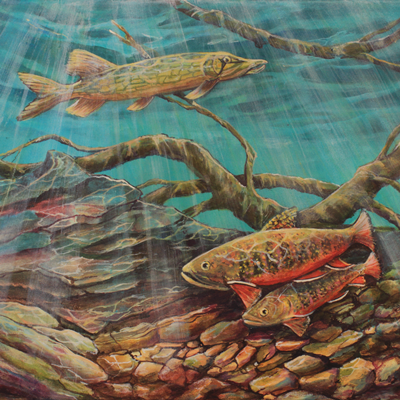
“Millers River Native Fish”
by Susan Marshall
The beauty and importance of the Millers River links us together as it slinks through the North Quabbin and provides fresh, clean water habitats for birds, wildlife and fish. These Brook trout and Chained Pickerel are indigenous species that thrived in these waters. Today they are joined by Rainbow Trout, Largemouth Bass, and other game fish that have been introduced through the efforts of sportsmen and MassWildlife.This painting is Susan’s interpretation of the underwater world just below the surface, as it winds through the towns and forests.
Susan and her husband Ted have three grown children and six grandchildren. She has a degree from UMass in Fine Art and Technical Theater and graduate studies at University of Pennsylvania and Pennsylvania Academy of Fine Arts. She has had a custom mural business in NJ since 1994 spanning the greater Philadelphia area, NJ, and Maryland, doing both residential and commercial projects. She enjoys working with the towns of the North Quabbin on historical art projects highlighting the rich and beautiful legacy of the natural resources, people and businesses of our region.

“Metacomet/King Phillip”
by Susan Marshall
As a tribute to the Native Peoples of this area, this painting was inspired by the story of the son of Massasoit of the Wampanoag’s–Metacomet, known by his English name King Phillip. The rock depicted is based on the stories of Metacomet holding councils and meeting with settlers at a large glacial erratic in Royalston. He was a ‘King’ among his people and fought tirelessly for their right to their lands, their native beliefs, and their way of life.
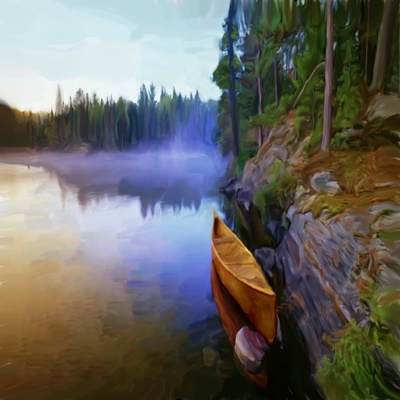
“The Riverside”
by Justin Beatty
Indigenous people from the Northeastern woodlands have always held water and waterways in high regard and sacred in many ways. The understanding that water gives us life and provides for us giving sustenance through fishing, replenishment through rain, and travel via river and creeks has played significant roles in cultural development for many Native nations in the region. The simple serenity of “Riverside” is meant to capture the beauty and usefulness of not only the water itself, but the relationship between Indigenous people and the water we appreciate and honor every day.
Justin Beatty is an artist of Native American and African American heritage. His Native American roots come from the Ojibwe in Ontario, Canada and the Occoneechi Saponi of Virginia and North Carolina. His art often reflects his view of the world from the Indigenous teachings with which he was raised. Justin is active in Native American communities in New England. Justin comes to the North Quabbin through his digital art forms reflecting the Indigenous People of our region and their spiritual connection to the land.
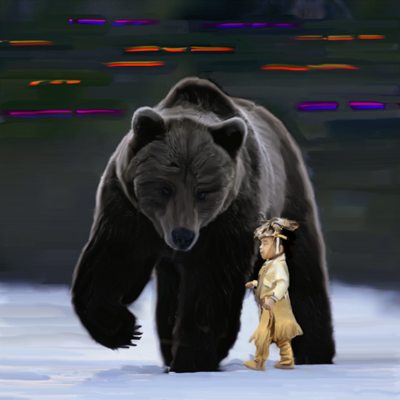
“Teachers Pet”
by Justin Beatty
Honoring the teachings that we as humans have learned from our animal brethren is a long–standing tradition in many Native American communities. Understanding that we are not separate from the natural world is something many people forget as they age, while children often revel in the relationship with the great outdoors and all it holds.

“A Moment at Dawn”
by Tom Wyatt
One morning before sunrise, I noticed dramatic streaks of red and orange began to appear in the sky. The intensity of the color steadily increased until I found a spot to stop the car. By the time I got my tripod and camera set up, the clouds and sky were ablaze! I hurried to compose and capture the scene. In the rush of the moment, I don’t remember whether I threw a stone to make the ripple or whether a fish jumped. Then, in less than five minutes, the vibrant hues of dawn was gone. Day had indeed broken and I was happy to have witnessed and documented that special morning moment.
Tom is photographic artist from Warwick, Massachusetts. He grew up traveling the world with his family, exploring cultural sites and art museums. Tom has enjoyed being a visual artist as an avocation for years. He now specializes in photography that captures the mysteries in reflected surfaces as fine art. The style he developed focuses on abstractions and impressions often hidden in this busy world. He is a founding member of the Pioneer Valley Photographic Artists and a coordinator of the Warwick Arts Council.
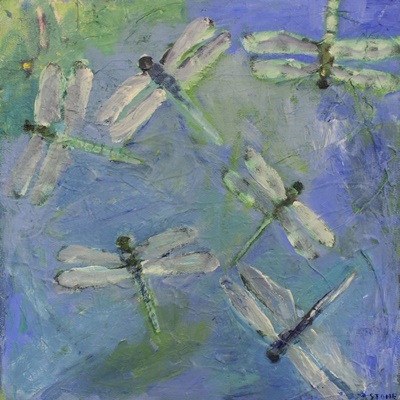
“Dragonflies Over the Lake”
by Kerry Stone
My husband and I were taking an early evening walk around Laurel Lake in the Erving State Forest. When we got to where the causeway crosses the lake there were hundreds of dragonflies zooming about. I had never seen so many! They seemed to escort us across the causeway and then turn around and fly back. The experience led me to paint dragonflies for the rest of that summer and find out more about them. This was my first painting after the ‘dragonfly encounter’. My favorite subjects are still dragonflies and flowers!
Kerry Stone is a painter collage artist from Warwick, Massachusetts. She has taught in California and Massachusetts for 25 years. She taught at the village school in Royalston for 11 years. She continues to teach illustrated journaling and painting classes. She is the cofounder of Sawmill River Arts Gallery. Her work is displayed at the Montague Book Mill.
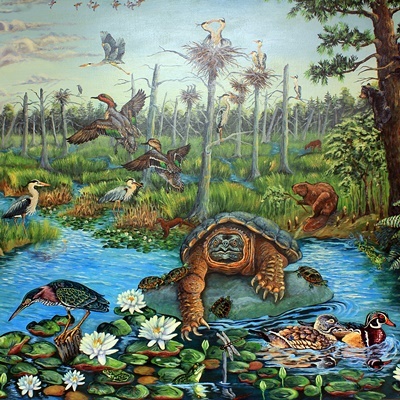
“Our Unknown Neighbors”
by Bill Fournier
The secret world of wetlands is a wonder for all observers in the North Quabbin. A world of muck, mire, and mosquitoes stop the average observer at the very edge. Strange sounds can be heard from deep within. Its sources are hidden from view by thick vegetation. I stood at the very edge of this secret place. Strange sounds filled the eerie silence. Imagination and curiosity filled my head. I designed and built several camouflage floating blinds covered by grass. This enabled me to travel throughout all nooks of the wetland and remain unseen and unheard by its residents. Even canoes, passing by only yards away, never saw me. I became part of the secret wetland world.
Bill has always had a deep appreciation and love of nature. He has spent most of his lifetime wandering the hills, the valleys and wetlands of New England, experiencing many years of tranquility and exhilaration. His journey became a personal labor of love to repay nature for all the pleasure it gave him. He has attempted the challenge of capturing nature sequences as a photographer and then painting his impression of this very special natural world.
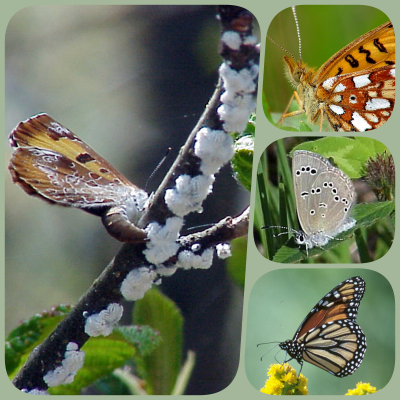
“Butterflies our Summer Jewels”
by Dave Small
Summer is not complete without the graceful movement of butterflies across our landscape. The public notoriety of the Monarch (lower right) and its epic journey can’t be denied. Shown are several other butterflies that have interesting behaviors and life histories. The Harvester (left hand large image) is seen here depositing her eggs into a cluster of Alder Wooley Aphids. The Harvester is our only carnivorous butterfly whose larva will hatch and devour the unsuspecting aphids. Adult Harvesters feed on the sweet secretions called “honeydew” of other aphid species. The Silver–bordered Fritillary (top right) is an uncommon inhabitant of our wetland edges while the Silvery Blue (middle right) is a recent immigrant unassociated with global warming arriving from the north and west along our interstate road system which provided its favorite food plant “Vetch” along the sunny corridors.
Dave Small, a lifelong Massachusetts resident, is president of the 280 member Athol Bird and Nature Club and is currently Director of the Millers River Environmental Center in Athol. Dave shares his passion for Birds, Butterflies, Moths, Dragonflies, Reptiles and Amphibians through workshops, lectures and field trips around New England.
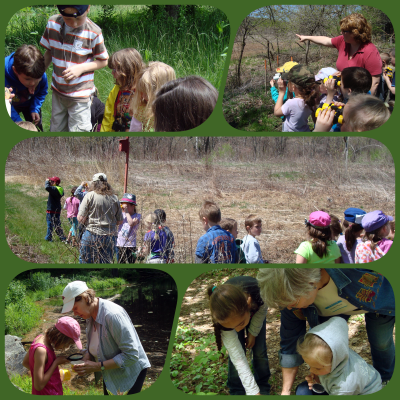
“Nature at our Door Step”
by Bonnie Benjamin
The Millers River Environmental Center is in the center of Athol, MA, adjacent to the Allen E. Rich Park on the shore of the Millers River. A welcoming door into the natural world and the learning it provides. These photos were taken as children came to MREC to explore and learn. Special thanks to all the volunteers that make these opportunities possible.
Bonnie is an active community member in Athol. As a former first grade teacher in Athol, generations of children learned about community, music, and our natural world through experiences her classroom. Bonnie and her husband Al are lifelong educators in Athol. They have joined forces on many occasions to take children into the world of nature and exploration as leaders in Girl Scouts, Boy Scouts, Athol Area YMCA Camp Wiyaka, The Athol Bird and Nature Club and Athol Community Elementary School. You can be sure there is always music on the trail with these two!
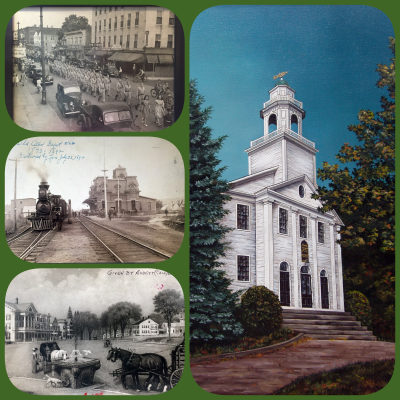
“From the Foundation of the Past”
by David Brothers
Athol has grown from the land, the waters, and the strength of the people who have lived here. We treasure each of these as our history and foundation. With the help of the local artist David Brothers and The Athol Historical Society, weHonor this rich History. Native peoples first called this area Pequoig. The first five families settled in Athol in 1735. The settlement grew and Incorporation of the town followed in 1762. The town grew as the beginnings of an industrial center along the Millers River and the road West to the Mohawk Trail.
A) We remember the growth of our region through an historic painting of J.F. Gilman as an itinerant artist who reflected the times of that era with detail and a hometown style about 1912 on the uptown common. The water fountain is still on the common, looking South toward the center of town.
B) According to Lord’s History of Athol, the depot was built 1848. This train station in the center of town was the center of transportation for people and products. After the fire in 1873 , this station was moved to the south side of the tracks to make room for a new brick depot. For years the old depot was a dwelling, later a stable and finally storage until it burned in 1935. Passenger trains do not travel this way. It is presently a transportation center for Monadnock Area Regional Transit (MART) buses.
C) In 1942 the welcome home parade for the returning soldiers was spectacular! This was a thriving community, proud of its part in the victory of World War II both at home and across the sea.
D) Painted by local artist David Brothers, The First Unitarian Church was built in 1828. The Athol Town Hall was housed in the second floor of this building from 1847 until the new town hall was dedicated in 1920’s. It is presently The Athol Historical Society. It is a public meeting place for programs, a learning center for all ages, and museum of artifacts from the history of Athol.

“Native Plant Portraits”
by Heidi Strickland and Susan Paju
This window art includes images of native plants found growing in the North Quabbin region. The native species are special treasurers as we discover them on each walk in the forest, wet lands, and the native gardens here around the Millers River Environmental Center. Although many flowers and shrubs are common, others are becoming scarce and need our special protection! With the cooperation of the North Quabbin Garden Club, the habitat gardens around MREC have been planned and planted to include this wonderful diversity of native species.
Heidi Kleiner and Susan Paju have been enjoying the North Quabbin environs since 1999. Heidi is an avid gardener and Susan is a painter. Together they create plant portraits using a flatbed scanner and digital imaging software.
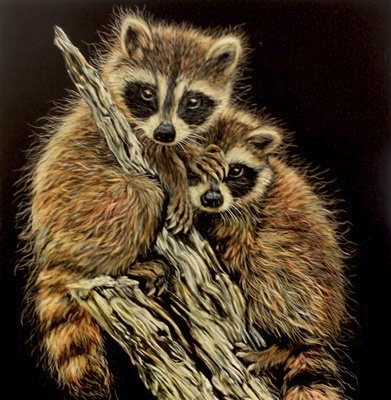
“Baby Raccoons At Night”
by Kim Bolton
Kim enjoys painting animals and the emotion that comes to life in each of her subjects. You can see the fun and mischief that this pair of amazingly cute young ones can get into as they wander the darkness of night!
Kim is a self-taught artist that comes from a family with many artistic talents. In the early years she would draw mostly in pencil and some charcoal. Later she rediscovered scratchboard art which she had tried as a high school student. She now enjoys extending this medium to painting the scratchboards. Painting and wood burning are other forms of art that she enjoys. She is a member of a local carving group.
Project funded by Massachusetts Cultural Council

Sign up for our
Email Newsletter
We appreciate the cooperation of our neighbors: Mount Grace Land Trust, Northfield Bird Club, Northfield Mountain Recreation Center, Ware River Nature Club, Hampshire Bird Club for sharing their events with our members
You should expect to receive about one email per week.
